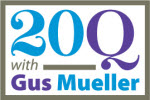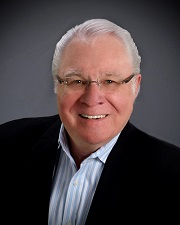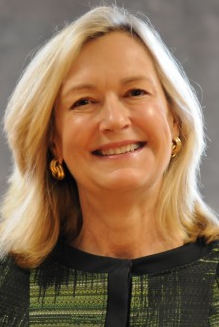 From the Desk of Gus Mueller
From the Desk of Gus Mueller

If you are in the business of dispensing hearing aids, you are well aware that there are many disruptive market forces these days. Will hearables replace hearing aids? Will over-the-counter hearing aids soon be common place? Will the big box stores continue to garner increasingly larger chunks of market share?
Most savvy audiologists have recognized that their strength lies in their services, not the product that is dispensed. It’s important to separate themselves from the rest of the pack. Regarding the hearing aid fitting process, we know from MarkeTrak VIII data, that by simply following Best Practice verification guidelines, patient loyalty improves by nearly 30%. Similarly, recent data from Amyn Amlani and colleagues show that significant improvement in patient satisfaction occurs when probe-mic measures are added to the fitting protocol. But, are there things we can do to increase patient satisfaction and loyalty in the months (or years) that follow the fitting process? This month’s 20Q author thinks that there is!
Nancy Tye-Murray, PhD, is a Professor in the Department of Otolaryngology at Washington University School of Medicine and directs the Audiovisual Speech Perception Laboratory. Dr. Tye-Murray has received over 30 years of continuous funding from the National Institutes of Health and has authored over 150 articles and five books—the most notable being Foundations of Aural Rehabilitation: Children, Adults, and Their Family Members, which is now in its 4th edition. She is the former president of the Academy of Rehabilitative Audiology and currently serves as Hearing Editor for the Journal of Speech-Language-Hearing Research. Related to her interest in auditory training, Nancy has developed a computerized auditory training program accessed via the Internet called clEAR™, which stands for Customized Learning: Exercises for Aural Rehabilitation™.
As evidenced by her continued research efforts and publications, Nancy’s career focus has been rehabilitative audiology. In her contribution here at 20Q, she provides us some compelling reasons to consider an often neglected component of the rehabilitation process—auditory training. And indeed, this very well could be yet another way that we can separate ourselves from the competition and provide better outcomes at the same time.
Gus Mueller, PhD
Contributing Editor
November 2016
Browse the complete collection of 20Q with Gus Mueller CEU articles at www.audiologyonline.com/20Q
20Q: Rehabilitative Audiology - Remaining Competitive in a Changing Hearing Healthcare Environment
Learning Objectives
- Readers will be able to explain what is meant by the term 'customized hearing healthcare.'
- Readers will be able to list four key elements that the author believes should comprise hearing healthcare, and explain how they can be customized.
- Readers will be able to describe an approach to auditory training that is designed to carryover to patients' real world communications.

Nancy Tye-Murray
1. You’ve talked about the importance of rehabilitative audiology for many years. Still have the same beliefs today?
Even more so! This is a crucial topic. The ground is shifting rapidly and many audiologists are expressing concerns about how changing government rules and regulations, new technologies such as personal sound amplification products (PSAPs), automated hearing tests, and hearing aids offered by discount stores will impinge on their professional territory and even their livelihood.
2. What exactly do you mean by “impinging on their professional territory”?
On a number of occasions, I’ve been asked by my friends and family members who suspect that they may have a hearing loss, “Why should I pay more for a hearing aid from an audiology practice when I can get a less expensive one that’s just as good from Costco? And why should I go to an audiologist when I can get a hearing screening at my drug store or health club?”
3. Reasonable questions. What’s your response?
My answer has evolved over the years. I used to talk about how only a professional with a degree in audiology can provide optimal hearing healthcare. I was often met with the response of, “Yeah, but at the end of the day, won’t I have a similar outcome if I go for the inexpensive route?” This response became increasingly commonplace, and in truth, at times I have found it challenging to explain to laypersons why an audiologist’s years of training justify their charging significantly more for a basic hearing test and a new hearing aid than other providers who are not audiologists.
4. How do you answer this question today?
I promote the idea of customized hearing healthcare, the notion that one size doesn’t fit all. Audiologists receive three to four years of post-graduate training in hearing healthcare. They are equipped to do much more than conduct a basic hearing test and fit hearing aids. They should be capitalizing on their expertise and providing an array of services ranging from counseling to speech perception training to social support. Importantly, they should customize each patient’s hearing healthcare plan.
5. What do you mean by customized hearing healthcare? Is this the same thing as comprehensive hearing healthcare?
The two terms are not different in a black and white sense but rather, they differ in shades of gray. Let me explain.
Some audiologists talk about providing comprehensive care, which actually may scare some patients away because they might think they are being sold a Cadillac when all they really want is a no-frills Hyundai. By contrast, with customized care, the audiologist may offer all of those services and interventions, but tailors the hearing healthcare plan to those that best address the needs and predicament of each particular patient.
6. These kinds of ideas have been around for a long time, but it seems to me they usually get more lip service than actual implementation.
Unfortunately, this is true. We’ve long talked about the importance of understanding a patient’s particular predicament and about the importance of joint goal setting and shared-decision making. In reality, audiologists have often adopted a pretty standard approach comprised of audiological testing and the fitting of a pair of hearing aids, and this is probably because other services are often too time-consuming to provide and don’t generate a lot of income for the audiologist.
7. Have you an alternative solution?
As a matter of fact, yes. I encourage audiologists to start providing hearing healthcare that is comprised of four key elements, and each element can be customized to suit the particular patient. Let me give you a brief summary of these four elements.
The first element is addressing the patient’s predicament: Diagnose the patient’s hearing loss, provide the patient with appropriate amplification, and importantly, identify those situations that the patient experiences the most listening problems and provide solutions. Within this element I include the possibility of providing auditory training to promote everyday conversational fluency, of which I’ll expand on in just a moment.
The second key element is to involve the important people in the patient’s life. Too many times I’ve seen a spouse or loved one sitting in the waiting room reading a magazine when that person should be playing a role within the rehabilitation plan.
The third key element is to create a sense of community for the patient, where the patient can interact with other patients within an audiologist’s practice and have a chance to experience comradery and a sense of “I’m not the only one with hearing loss.”
Finally, the fourth key element is to become a partner in the patient’s journey and a presence in the patient’s life as he or she navigates the road that may be peppered with hearing-related challenges.
Audiologists are beginning to master the third and fourth elements, thanks to regular emails and newsletters, community bulletin boards, and clinic-based support groups. It’s the first two elements that remain problematic. For example, many patients could benefit from receiving certain kinds of auditory training that would address their listening predicaments, yet very few patients receive it.
8. Let’s talk about auditory training. There seems to be an increased interest about auditory training in our profession and a lot of research is being conducted. Your thoughts?
Auditory training has been around a long time. As early as 1805, Jean Marc Gaspard Itard was providing auditory training to students in the Paris School for Deaf-Mutes. Its popularity dimmed after the introduction of modern hearing aids and then resurged with the advent of cochlear implants, when we realized that recipients had to learn how to interpret a new auditory speech signal. Now we have several programs available, for both hearing aid users and cochlear implant users, probably the most popular being LACE. Personal computers and the Internet have made auditory training easily accessible for many people who didn’t have access before.
9. You seem to be pretty positive, but I thought I just heard that VA research found that an actual training program did not yield any better results than simply listening to books on tape.
You might be referring to the recent publication of Saunders and colleagues (2016). They found that veterans who have hearing loss and who completed the LACE auditory training program did not receive any more benefit than veterans who completed a control condition. I applaud LACE for many reasons, not the least of which is that it has broken new ground by bringing auditory training to the forefront and it has provided patients with a tool for taking ownership of their communication difficulties. I also think the research design employed by Saunders and her colleagues sets a new gold standard for research in audiological rehabilitation.
There are two outcome measures that might have been telling if they had been included in the study design: a measure of perceptual effort and a measure of self-confidence or self-efficacy. We’ve found that auditory training reduces perceptual effort (Sommers, Tye-Murray, Barcroft, & Spehar 2015), so even though percent words correct scores may not change, patients find that listening takes less effort following training. We’ve also found that auditory training increases confidence in engaging in conversations (Tye-Murray et al., 2012), and an increase in self-confidence is a very positive outcome.
With that caveat, for me, the take-home message of the Saunders et al. (2016) study concerns the importance of using a Transfer Appropriate Processing framework, a concept that has long been popular in second language learning, to improve the efficacy of auditory training.
10. You have a way that auditory training can be improved?
In addition to addressing the benefits of improving self-confidence in engaging in conversations and to reducing perceptual effort, I do have a way to improve auditory training. Perversely enough, the answer is to be found in the recent hoopla that has been raised about the ineffectiveness of the brain-training games provided by a company called Lumosity. In a nutshell, research shows that the skills trained in the Lumosity brain-training games improve users’ performance on the games but those gains don’t generalize to other tasks. That is precisely what we should be doing in auditory training and why, when auditory training doesn’t seem to work, it’s because we aren’t focusing on the tasks we want patients to learn. When designing auditory training activities, we should adopt a Transfer Appropriate Processing framework, where we train patients on the tasks that they desire or need to master. When we measure outcomes, we should include measures of perceptual effort, self-confidence, self-efficacy (e.g., Smith & West, 2006), and conversational fluency.
Let me give you a couple of examples. Every one of us encounters about 800 common words of the English language over and over again during everyday conversations, so Humes and colleagues (2014) took the task of training patients with hearing loss explicitly to recognize these words. In addition to training frequently used words, if a patient wants to recognize the speech of a particular talker, my group trains that patient using speech training stimuli spoken by their preferred talker. If a patient wants to hear a spouse or an adult child better, we provide auditory training using speech recorded by that particular person. If a patient wants to hear children’s voices better, we provide auditory training using speech spoken by a group of children.
Using a program I've developed named clEAR™, we provide computerized auditory training via the Internet in an engaging, game-like format. clEAR stands for Customized Learning: Exercises for Aural Rehabilitation™. Our approach is to use a recording and editing system that allows the audiologist to use a personal computer microphone to record the voice of a patient’s frequent communication partner speaking the training stimuli. The recordings are immediately and automatically implemented into the auditory training game software. On the same day that the recordings are made (for example, on the day that a patient receives new hearing aids), the patient can begin receiving auditory training with a frequent communication partner’s voice and practice recognizing the speech of anyone who is important in his or her life. Not only does this incorporate the first element of customized hearing healthcare that I just mentioned, that of addressing the patient’s predicament, it also incorporates the second element, that of giving the frequent communication partner a role to play in the hearing healthcare plan.
11. And who is the frequent communication partner?
Patients might want to hear their spouses better, or a grandchild, a sibling, or a co-worker, etc. The patient determines who is the frequent communication partner. When a patient comes to us, we ask, “Who is it that you want to converse with in your everyday life?”, and then we train patients to recognize the speech of that person. This is the ultimate in customization. The frequent communication partner plays a role in the hearing healthcare treatment plan by recording the training stimuli in a quiet room in the clinic.
12. But if the patient knows the person very well, is there still a potential to get better at recognizing that person’s speech by receiving auditory training?
Yes. We recently published a study involving couples who had been married an average of 14 years (Tye-Murray, Spehar, Sommers, & Barcroft, 2016). The spouse recorded the training stimuli, and then the person with hearing loss received auditory training with the spouse’s recordings. Our results showed that the participants significantly improved their abilities to discriminate their spouse’s voice in the presence of background noise and significantly reduced their reported communication difficulties as measured by the COSI, implicitly suggesting that conversational fluency improved. I should add that patients can receive training with more than one frequent communication partner and with a voice that is less familiar to them than a spouse. For example, a grandchild who lives in another state and is coming for a visit can record the training stimuli from a home computer and then a patient can train with the child’s voice on their own computer before the visit.
13. What if a patient doesn’t have a frequent communication partner?
If the patient doesn’t have a particular person in mind, training can still be customized because we offer the options of training with male, female, or child voices. For example, one patient may express difficulty in hearing all voices. In this instance, an audiologist would start the patient off with practicing with male voices, then female voices, then children’s voices, and then a combination of all three because this sequence represents an ascending hierarchy of listening difficulty. Another patient may only experience difficulty with women’s voices, so that patient would train only with female voices.
14. How does this involve the audiologist, that fourth component that you include in your model of customized hearing healthcare? It sounds like patients simply have to go on the Internet and find the program.
I passionately believe that the involvement of an audiologist in any auditory training program is critical, regardless of what program it is. In one of the studies we conducted, we found that when patients received auditory training in a controlled setting where they were greeted before training and encouraged briefly after training, the compliance rate of staying with training was 95% (Tye-Murray et al., 2012). When we queried them about what they most liked about training, one of the most frequent responses was "contact with a hearing professional." In some web-based programs, including ours, when a patient signs up, they are connected with an audiologist in their vicinity. It becomes a win-win situation in that the patient is provided with professional hearing healthcare and the audiologist gets a new patient.
Ideally, many audiologists will opt to enroll appropriate candidates for auditory training into these web-based programs during a patient’s clinic visit and then maintain contact with the patient. After enrolling a patient, we use a templated email system so audiologists can provide feedback to their patients about their progress and do so in a way that is time-effective and feasible. We know from clinical experience that auditory training is most effective when it is overseen by an audiologist and that patients are much more likely to stay engaged in an auditory training program if they believe that someone is monitoring their usage and cares about how they are progressing.
We also create web-based clinic bulletin boards, where all the patients who are engaging in auditory training within a practice can communicate and earn communal coins for playing the auditory training games. This feature addresses that third element of customized hearing healthcare, that of creating a sense of belonging to a community of people who share having a hearing loss.
15. Is this training something the patient will have to always continue doing? Do they lose all the benefit if they stop training?
We have shown that auditory training benefits can be maintained for up to three months following cessation of training (Tye-Murray, Spehar, Barcroft, & Sommers, in review). With that said, however, I believe that auditory training should be much more ongoing and extensive than what occurs in current practice. It is unrealistic to provide say, eight or twelve hours of auditory training to a patient and then expect that the patient’s hearing proficiency will be forever changed (which we sometimes expect!). The reason I advocate the use of computerized games is that training activities should be engaging and reinforcing, so patients will want to play them again and again and over a long stretch of time. We strive to create auditory training games that are so entertaining that patients will want to play them, even if they weren’t good at them! And the reason I advocate the ongoing involvement of an audiologist is that patients need to know that someone cares about their progress and cares that they are working to improve their listening performance in order for them to stay motivated to train.
16. Let’s get back to this idea of transfer-appropriate training. What is the research telling us about its effectiveness?
In a meta-analysis about the effectiveness of auditory training, Henshaw and Ferguson (2013) assessed on-task learning, which they defined as “any improvement in performance on a task or stimulus that had been directly trained." They concluded that on-task learning for auditory training seems to be the norm and it seems to work. For example, Larry Humes and his group (e.g., Burk & Humes, 2008; Humes et al., 2014) found that patients who were trained to recognize the most frequent words of the language improved their abilities to recognize these words. Barcroft and colleagues (2016) found that auditory training on particular tasks, such as speech discrimination, led to significant improvement on these tasks.
17. The idea of customized auditory training seems like it would work for children too. Would you agree?
Absolutely. Imagine on the last day of the school year, children who have hearing loss and who are mainstreamed are given computer games that are fun to play. The games present the speech of their next year’s teacher so that during the summer, they learn to recognize that teacher’s speech. On the first day of class in the new school year, the children are familiarized with their new teacher’s voice because they’ve been listening to it all summer.
18. They even might be less anxious on the first day because they might feel like they know the teacher.
Exactly. I call it the “Oprah Winfrey Effect.” If you were walking down the street in Chicago and saw Oprah on the sidewalk, you would feel like you know her even though you don’t because we are all so familiarized with her. Likewise, the teacher might seem familiar because of exposure via the auditory training games. We’re currently developing a program for children in my lab right now.
19. What other kinds of research have you done in terms of customized hearing healthcare?
We just finished a study about how best to present auditory training, whether in a massed format, say every day for two weeks, or in a spaced format, say twice a week for a period of eight weeks (Tye-Murray et al., in review). It looks like both formats are equally effective, so an audiologist has leeway in shaping a training schedule to fit the preference of the patient. For example, some patients may only want to train a couple of evenings a week while others might want an intensive experience that includes training every morning.
20. What do you see happening next in terms of customized hearing healthcare?
I see audiologists re-imagining what it is that they do. My colleague Tad Zelski suggests that when a patient goes into an audiological practice, the experience should be akin to going into a top-of-the-line bicycle store. When you go, you aren’t necessarily going into the store to buy an expensive bike. Some days you might be going in for advice and some days for accessories or maintenance for a bike. But on that day that you decide you do want that expensive bike, because you have a relationship with this store, there’s no question where you’re going to make the purchase.
References
Barcroft, J., Spehar, B., Tye-Murray, N., & Sommers, M.S. (2016). Task- and talker-specific gains in auditory training. Journal of Speech-Language-Hearing Research, 59, 862-870.
Burk, M.H., & Humes, L.E. (2008). Effects of long-term training on aided speech-recognition performance in noise in older adults. Journal of Speech, Language, and Hearing Research, 51(3), 759-771.
Henshaw, H., & Ferguson, M.A. (2013). Efficacy of individual computer-based auditory training for people with hearing loss: A systematic review of the evidence. Plos One 8, e62836.doi:10.1371/journal.pone.0062836
Humes, L.E., Kinney, D.L., Brown, S.E., Kiener, A.L., & Quigley, T.M. (2014). The effects of dosage and duration of auditory training for older adults with hearing impairment. Journal of the Acoustical Society of America, 136(3), EL224-EL230.
Saunders, G.H., Smith, S.L., Chisolm, T.H., Frederick, M.T., McArdle, R.A., & Wilson, R.H. (2016). A randomized control trial: Supplementing hearing-aid use with Listening And Communication Enhancement (LACE) auditory training. Ear and Hearing, 37, 381-396.
Smith, S.L. & West, R.L. (2006). The application of self-efficacy principles to aural rehabilitation: A tutorial. American Journal of Audiology, 15, 46-56.
Sommers, M.S., Tye-Murray, N., Barcroft, J., & Spehar, B. (2015). The effects of meaning-based auditory training on behavioral measures of perceptual efforts in individuals with impaired hearing. Seminars in Hearing, 36, 263-272.
Tye-Murray, N., Sommers, M.S., Mauzé, E., Schroy, C., Barcroft, J., & Spehar, B. (2012). Using patient perceptions of relative benefit and enjoyment to assess auditory training. Journal of the American Academy of Audiology, 23, 623-634.
Tye-Murray, N., Spehar, B., Barcroft, J., & Sommers, M.S. (in review). Auditory training for adults who have hearing loss: A comparison of spaced versus massed practice schedules.
Tye-Murray, N., Spehar, B., Sommers, M.S., & Barcroft, J. (2016). Auditory training with frequent communication partners. Journal of Speech-Language-Hearing Research, 59, 871-875.
Citation
Tye-Murray, N. (2016, November). 20Q: Rehabilitative audiology—Remaining competitive in a changing hearing healthcare environment. AudiologyOnline, Article 18656. Retrieved from www.audiologyonline.com


